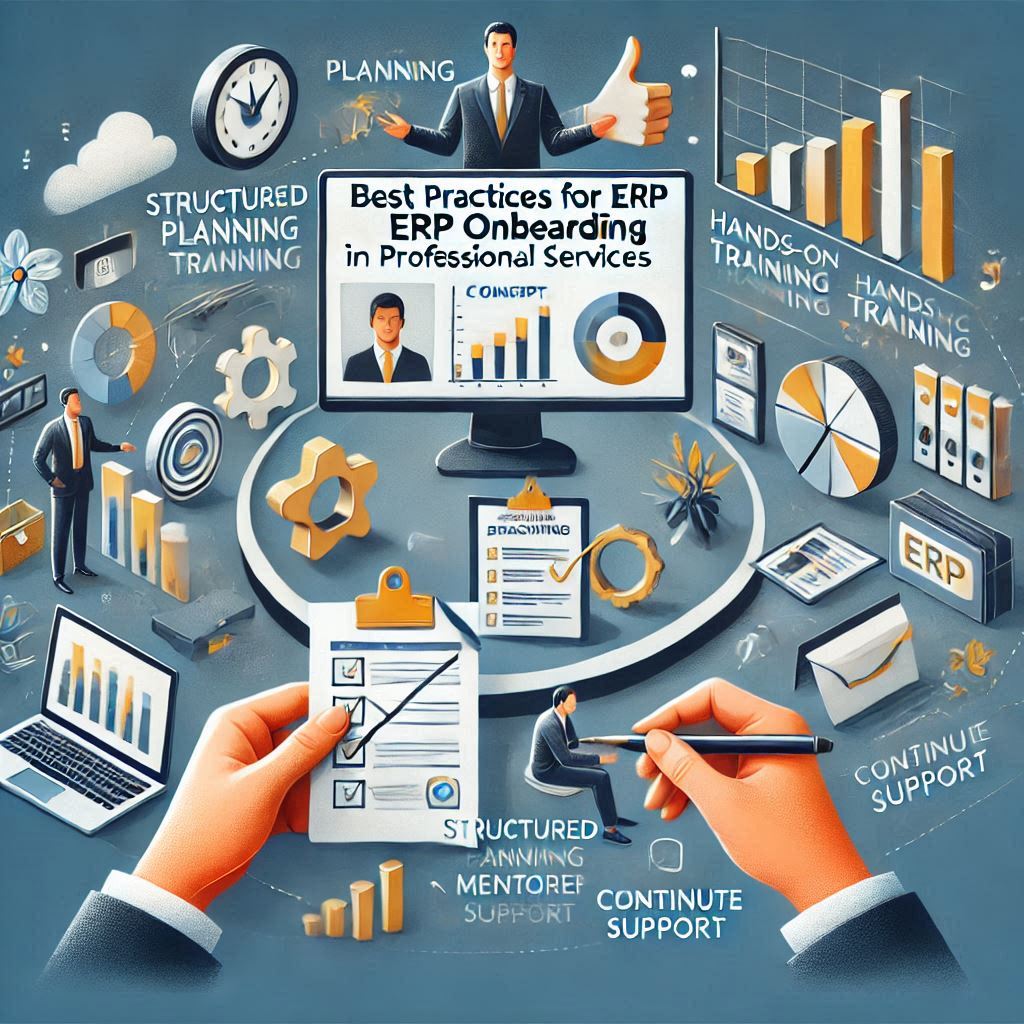Onboarding new employees in professional services, especially concerning Enterprise Resource Planning (ERP) systems, is crucial for enhancing employee performance and organizational efficiency. Implementing effective onboarding strategies can lead to smoother transitions and increased productivity. Here are the top best practices for seamless ERP onboarding.
1. Develop a Comprehensive Onboarding Plan
Creating a detailed onboarding schedule is essential. Outline daily and weekly tasks, training sessions, and key milestones. This plan should introduce new hires to the ERP system, explaining its functionalities and relevance to their roles. A structured approach helps prevent information overload, ensuring a productive onboarding experience.
2. Prepare Before the First Day
Send out a welcome package that includes vital information about the company, team members, and specific job expectations. Including preliminary materials related to the ERP system allows new hires to familiarize themselves with the tools they will be using before they start.
3. Establish Realistic Timelines
Set clear timelines for each phase of the onboarding process. Allocate adequate time for comprehensive training and continuous learning, which will help new employees gain confidence in using the ERP system effectively. Quick ramp-up sessions combined with ongoing support can facilitate this process.
4. Implement Hands-On Training
Provide practical, hands-on training that allows new employees to interact directly with the ERP system in a controlled environment. This approach enables them to learn through experience, making mistakes without real-world consequences—crucial for mastering complex functionalities.
5. Incorporate Mentorship Programs
Pairing new hires with experienced mentors familiar with the ERP system can provide essential support. This mentor-mentee relationship allows new employees to ask questions and gain insights in a less formal setting, easing their transition into the organization.
6. Encourage Continuous Feedback
Soliciting feedback from new employees about their onboarding experience is vital. This practice not only identifies areas for improvement but also empowers new hires by making them feel valued and heard. Regular check-ins ensure they adapt well to the ERP system.
7. Manage Resistance to Change
Recognize that resistance to change is common during ERP implementations. Engage leadership in communicating the benefits of the new system and involve employees in discussions about changes to foster buy-in. Clear explanations of how the ERP will enhance workflows can help mitigate resistance.
8. Provide Ongoing Support
The onboarding process should extend beyond initial training. Establish ongoing support mechanisms such as refresher courses, skill assessments, and access to resources like FAQs or community forums where employees can seek help and share experiences.
9. Leverage Technology for Training
Utilize digital tools to ensure continued access to training materials and resources. Digital Adoption Platforms (DAP) facilitate real-time learning as employees navigate their workflows, providing necessary support when needed.
Conclusion
Implementing effective ERP onboarding practices is essential for ensuring that new hires quickly become productive members of professional services firms. By following these best practices—developing structured plans, preparing ahead of time, offering hands-on training, and ensuring ongoing support—organizations can significantly enhance employee satisfaction, retention rates, and overall productivity.By optimizing your ERP onboarding strategy using these best practices, your professional services firm can maximize its digital assets while fostering a culture of continuous improvement and knowledge retention.




